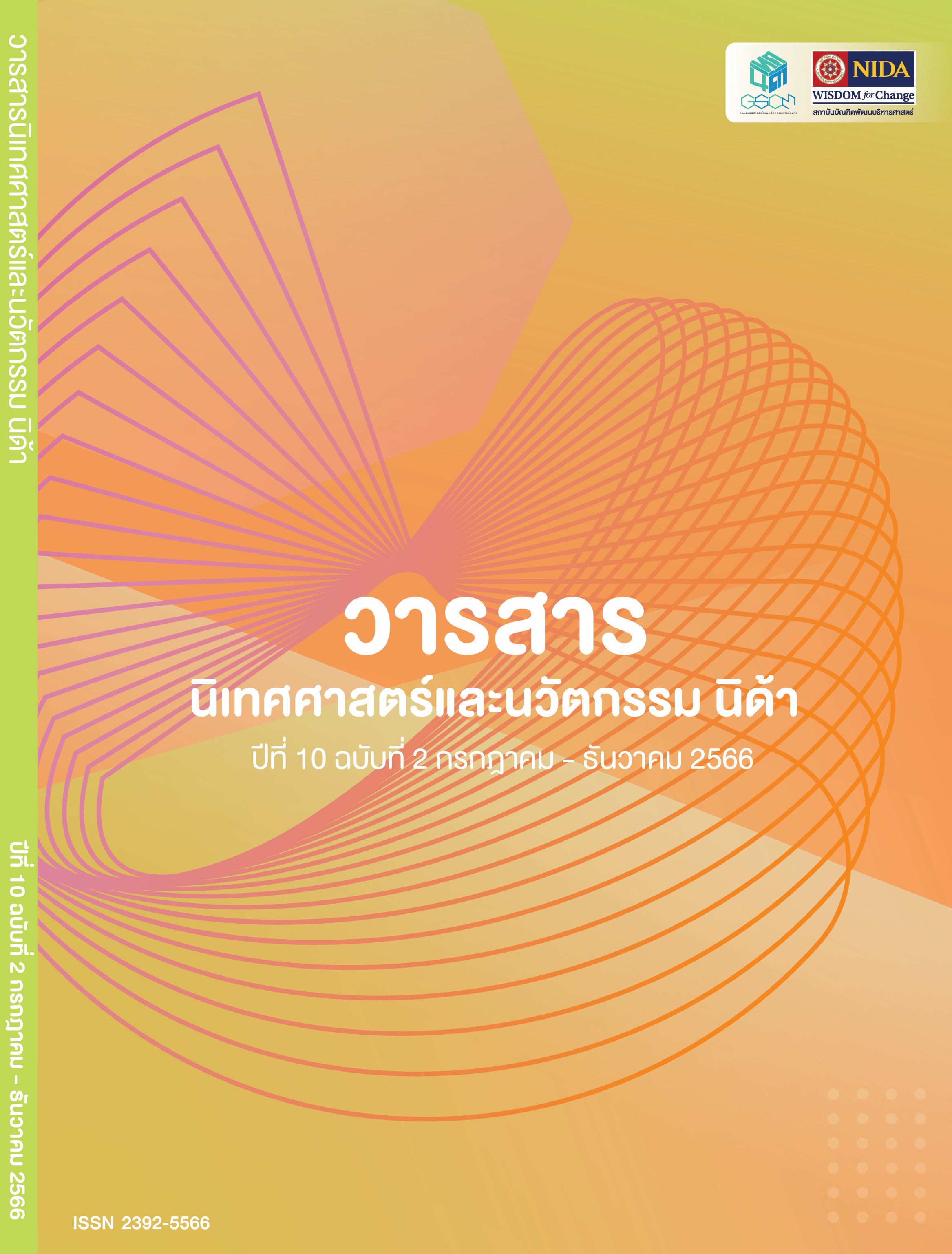Managing the Coronavirus 2019 Pandemic in Thailand Towards the World Leading Medical Hub: Perspectives of Health care providers and patients in Thailand
Main Article Content
Abstract
The objective of this research is to study managing the COVID-19 epidemic situation in Thailand, which has a positive effect on the development to be a world medical hub.
For the quantitative research part, the data were collected by a survey questionnaire from 418 respondents, and for the qualitative research, four key informants, three persons with direct experiences in dealing with the disease and one expert in marketing and crisis communication, were interviewed.
The quantitative results revealed that medical personnel and the Thai general public have a moderate opinion on the ability to control COVID-19 infectious disease in Thailand. The top three factors were (1) the national laboratory system for infection confirmation, (2) surveillance, disease investigation, and contact tracing, and (3) public and private communications, including community involvement. This is in line with opinions about the medical potential of Thailand as a world medical hub, which overall is at a medium level, and the first factor is the development of medical services. Also, the qualitative results confirmedly found that Thailand's strength in both topics is the ability of Thai physicians. To create confidence, the government should focus on driving the policy seriously. They should accelerate the increase in the number of medical personnel, research medical innovations, and marketing communication.
Article Details

This work is licensed under a Creative Commons Attribution-NonCommercial-NoDerivatives 4.0 International License.
ข้อความและความเห็นในวารสารนิเทศศาสตร์และนวัตกรรม นิด้า เป็นของผู้เขียนแต่ละท่าน มิใช่ของคณะนิเทศศาสตร์และนวัตกรรมการจัดการ สถาบันบัณฑิตพัฒนบริหารศาสตร์
References
กตัญญู หิรัญญสมบูรณ์. (2557). การจัดการการบริการ (1). ม.ป.ท.
กรมสนับสนุนบริการสุขภาพ. (2559). ธุรกิจบริการสุขภาพ. กระทรวงสาธารณสุข. https://hss.moph.go.th/fileupload_doc_slider/2016-12-08--439.pdf
กรมสนับสนุนบริการสุขภาพ. (2563). รายงานสรุปผลการดำเนินงานตามนโยบายการพัฒนาประเทศไทยให้เป็นศูนย์กลางสุขภาพนานาชาติ (นโยบาย Medical Hub) ประจำปีงบประมาณ พ.ศ.2563 (รายงานผลการดำเนินงาน). กระทรวงสาธารณสุข.
กลุ่มภารกิจด้านข่าวและสื่อมวลชนสัมพันธ์. (14 ตุลาคม 2563). WHO ชื่นชมไทยมี 6 จุดเด่นหลักช่วยจัดการโควิด 19 ได้ดี แนะพัฒนาเพิ่มเพื่อรับระลอกสอง. สำนักสารนิเทศ สำนักงานปลัด กระทรวงสาธารณสุข. https://pr.moph.go.th/?url=pr/detail/2/04/148531/
กุลวดี กิตติดุลยการ. (2555). การพัฒนาศูนย์กลางสุขภาพทางการแพทย์ของประเทศไทยสำหรับผู้รับบริการชาวจีน. มหาวิทยาลัยศิลปากร.
คณะกรรมการป้องกันและบรรเทาสาธารณภัยแห่งชาติ. (2558). การจัดการภาวะฉุกเฉินทางสาธารณสุข ระบบบัญชาการเหตุการณ์และศูนย์ปฏิบัติการภาวะฉุกเฉินทางสาธารณสุข กรมควบคุมโรค [เอกสารที่ไม่มีการตีพิมพ์]. กรมควบคุมโรค, กระทรวงสาธารณสุข.
ชาญณรงค์ สังขอยุทธ์ และ เพ็ญนภา หงษ์ทอง. (2557). ประเทศไทยบนถนนสู่ศูนย์กลางสุขภาพนานาชาติ (1). กระทรวงสาธารณสุข.
ธรรมรัตน์ มะโรหบุตร. (2561). ยุทธศาสตร์นโยบายการเป็นศูนย์กลางทางการแพทย์ (Medical Hub) กับ
สถานการณ์ที่สะท้อนผลกระทบต่อระบบสุขภาพของประเทศไทย. วารสารคุณภาพชีวิตกับกฎหมาย, 14(2), 27-41. https://repository.li.mahidol.ac.th/entities/publication/8d2c0a39-9f1c-4986-8726-db3167d159fb
บุญรัตน์ รัฐบริรักษ์. (2557). โครงการกิจกรรมการเชื่อมโยงงานวิจัยกับภาคนโยบาย: การเพิ่มศักยภาพการเป็นศูนย์กลางสุขภาพของไทย. TRF Policy Brief, 4(1), 1-8. http://prp.trf.or.th/trf-Policy-brief/การเพิ่มศักยภาพการเป็น/
ประภาพรรณ ศรีมันตะ และ ปณัทพร เรืองเชิงชุม. (2562). การลดความสูญเปล่าที่เกิดจากการรอคอยใน
โซ่อุปทานของกระบวน การตรวจวิเคราะห์ทางห้องปฏิบัติการด้านเคมีคลินิก. วารสารเกษตรศาสตร์ธุรกิจประยุกต์, 13(18). 1-14. https://kukrdb.lib.ku.ac.th/journal/KABJ/search_detail/result/396532
สำนักงานบริหารนโยบายของนายกรัฐมนตรี. (2563). WHO ถอดบทเรียน 6 จุดเด่นทำไมไทยชนะโควิด-19. https://www.pmdu.go.th/how-thailand-win-covid-19-who/
สำนักเลขาธิการนายกรัฐมนตรี. (2565). สธ.-WHO สรุปถอดบทเรียนไทยรับมือวิกฤต “โควิด” สำเร็จจาก 5 ปัจจัย เตรียมแถลงในเวทีโลกปลาย พ.ค.นี้. https://www.thaigov.go.th/news/contents/details/54230?fbclid=IwAR1bAImlAbhsXSYBQMRqMsWg6MBSaLy90rOAYAeUHYiYKLch4hd6DcEERg
เสาวณี จันทะพงษ์, ทศพล ต้องหุ้ย, และ กัลยรัตน์ สุขเรือง. (2563). วิกฤตโควิด 19 กับมุมมองด้านเศรษฐศาสตร์สุขภาพ. ธนาคารแห่งประเทศไทย. https://www.bot.or.th/th/research-and-publications/articles-and-publications/articles/Article_07Jul2020.html
พชรพจน์ นันทรามาศ และ สุจติรา อันโน. (2565). รีสตาร์ท Medical Hub พาเศรษฐกิจไทยฝ่าวิกฤติโควิด-19. ธนาคารกรุงไทย.
พัชนี เชยจรรยา. (2558). การวิจัยเชิงปริมาณทางนิเทศศาสตร์ (1). สำนักพิมพ์มหาวิทยาลัยสุโขทัยธรรมธิราช.
World Health Organization. (2564). คำถามและคำตอบทั่วไปเกี่ยวกับโรคโควิด 19. https://www.who.int/thailand/emergencies/novel-coronavirus-2019/q-a-on-covid-19
Kotler, P., & Keller, K. L. (2007). A framework for marketing management. Pearson Education.
Office of Disease Prevention and Health Promotion. (2010). Health Communication. http://www.infosihat.gov.my/artikelHP/bahanrujukan/HEam/Health%20Communication.pdf
Rawikul, P. (2019). Marketing Communication Processes and Psychological Classification
for the Gender Reassignment Health Service Industry in Thailand through the Six Buddhist Temperaments [Doctoral dissertation, National Institute of Development Administration]. Bangkok. National Institute of Development Administration. https://repository.nida.ac.th/handle/662723737/6409?locale-attribute=en.
Timothy, W. C. (2007). Crisis management and communications. http://www.instituteforpr.org/crisis-management-and-communications/
Yamane, T. (1973). Statistic: An introductory analysis (3). Harper and Row.

